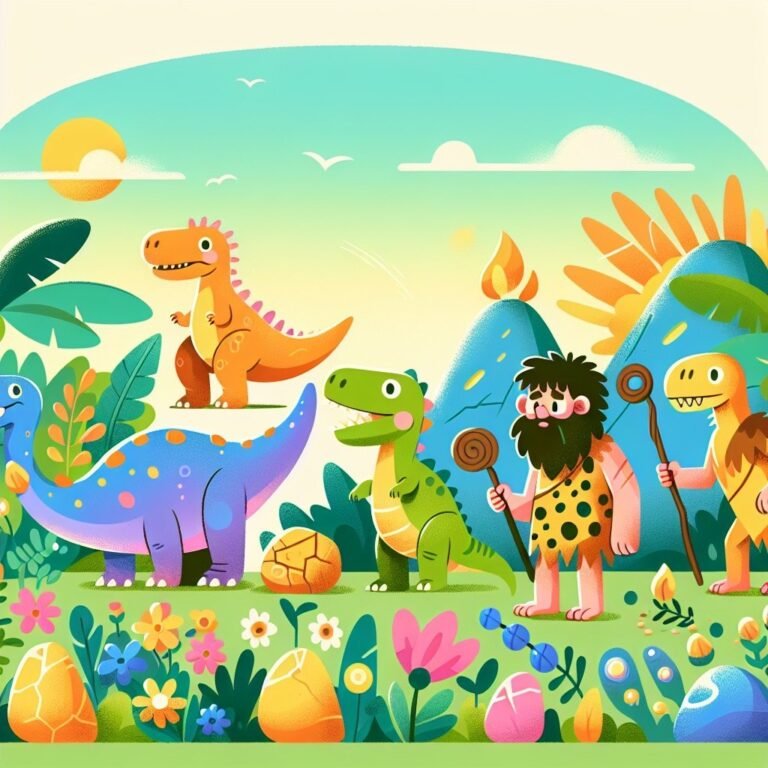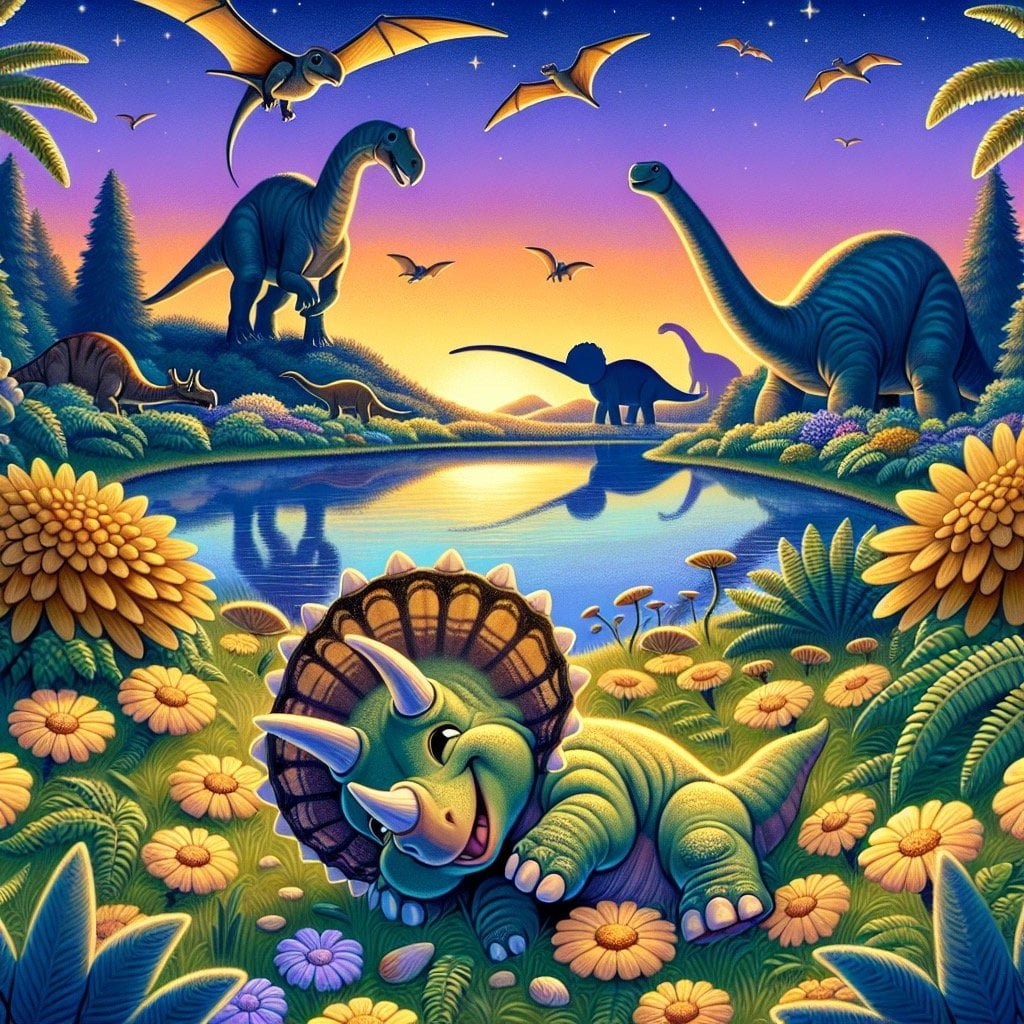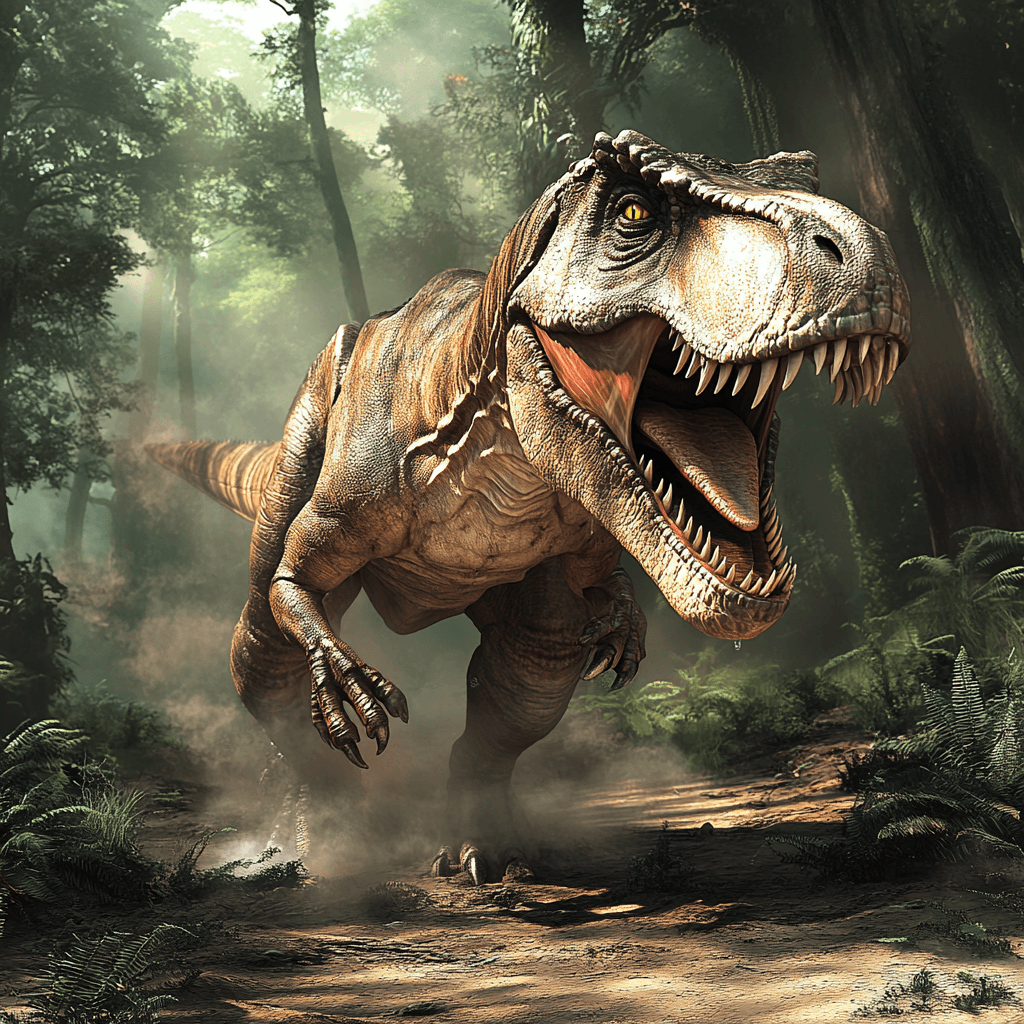Welcome to a world of wonder and discovery as we delve into the fascinating realm of **Fun Facts for Kids About Prehistoric Life**. Unlock the mysteries of ancient creatures that once roamed the Earth, from the colossal dinosaurs with their towering size and unique adaptations to the intelligent hunters like Velociraptors. Through captivating insights and detailed explanations, we will journey back in time to explore the diverse ecosystems and remarkable species that inhabited our planet long before humans existed.
Join us as we unravel the secrets of prehistoric sharks swimming in ancient seas, the giant ground sloths roaming the land, and the majestic woolly mammoths with their immense tusks. From the towering Brachiosaurus taller than a five-story building to the fearsome Spinosaurus, the largest carnivorous dinosaur, each fun fact will inspire awe and spark curiosity in young minds.
Prepare to embark on a thrilling adventure through time and evolution, where learning about prehistoric life becomes an exciting experience that ignites a passion for exploration and discovery. So, grab your curiosity and get ready to uncover the wonders of **Fun Facts for Kids About Prehistoric Life** that will leave you in awe of Earth’s ancient past.
Fun Facts for Kids About Prehistoric Life
1. Dinosaurs Lived on Earth for Over 165 Million Years

For younger kids: Dinosaurs were big animals that lived a really, really long time ago!
For older kids: Dinosaurs ruled the Earth for an astonishing 165 million years, from the late Triassic period, around 230 million years ago, until the end of the Cretaceous period, about 65 million years ago.
Detailed explanation:Dinosaurs roamed the Earth for an incredible span of time, spanning over 165 million years. This fact is truly awe-inspiring, showcasing the longevity and success of these incredible creatures. From the tiny, bird-like Archaeopteryx to the massive, long-necked Brachiosaurus, dinosaurs came in all shapes and sizes, dominating the planet for millions of years.
One of the most fascinating aspects of dinosaurs’ reign on Earth is the sheer diversity of species that existed during this time. From the terrifying carnivorous Tyrannosaurus rex to the gentle herbivores like Triceratops, the range of dinosaur species is truly astounding. This incredible diversity allowed dinosaurs to thrive in a variety of environments, from lush jungles to barren deserts, adapting to their surroundings and evolving over millions of years.
For kids who are fascinated by prehistoric life, there are plenty of fun facts to learn about dinosaurs. For example, did you know that the largest dinosaur ever discovered, Argentinosaurus, weighed as much as 17 elephants? Or that Velociraptor, made famous by the Jurassic Park movies, was actually about the size of a turkey? These fun facts can help spark a sense of wonder and curiosity about the world of the dinosaurs, inspiring young minds to learn more about these fascinating creatures.
Overall, the fact that dinosaurs lived on Earth for over 165 million years is a testament to their incredible adaptability and resilience. By studying these ancient creatures, we can learn valuable lessons about evolution, extinction, and the delicate balance of life on Earth. And for kids who are eager to learn more about prehistoric life, there are endless fun facts and discoveries waiting to be explored.
Fun Facts for Kids About Prehistoric Life
2. The T-Rex Had a Bite Stronger Than a Modern-Day Alligator
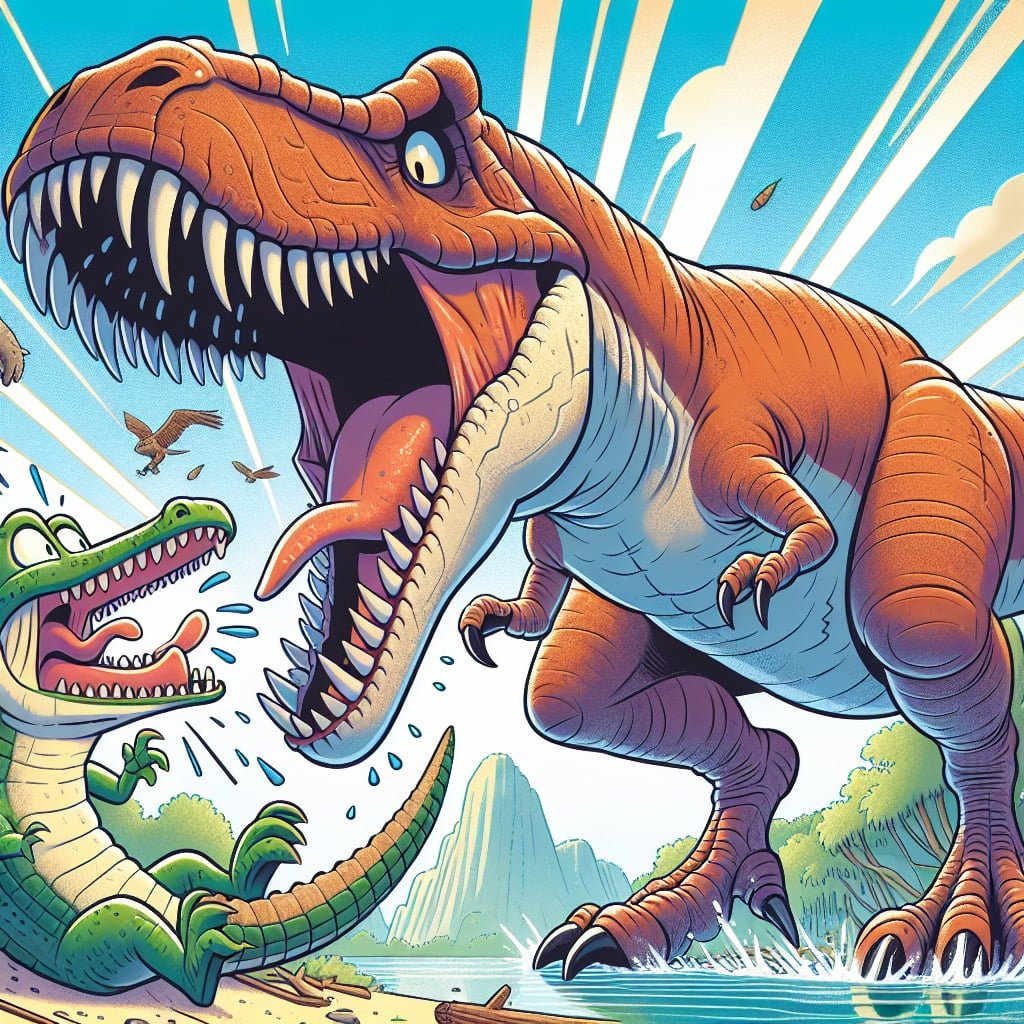
For younger kids: The T-Rex had a really, really strong bite!
For older kids: The Tyrannosaurus Rex possessed a bite force of over 7,800 pounds, stronger than that of any known carnivorous dinosaur or modern-day alligator.
Detailed explanation:One of the most fascinating Fun Facts for Kids About Prehistoric Life is that the T-Rex had a bite stronger than a modern-day alligator. This incredible discovery was made through fossil analysis and biomechanical modeling, which revealed that the T-Rex had one of the most powerful bites of any land animal that has ever existed.
The T-Rex, or Tyrannosaurus Rex, was a massive carnivorous dinosaur that lived during the Late Cretaceous period, around 65 million years ago. With its huge size and powerful jaws filled with sharp teeth, the T-Rex was a formidable predator in its time. Studies have shown that the T-Rex had a bite force of up to 8,000 pounds, which is stronger than that of a modern-day alligator.
The incredible bite force of the T-Rex was crucial for its survival as a top predator in its ecosystem. With its powerful jaws, the T-Rex could easily crush bone and tear through tough prey, making it one of the most fearsome predators of the prehistoric world.
This Fun Fact for Kids About Prehistoric Life highlights the incredible adaptations and abilities of prehistoric animals like the T-Rex. By studying fossils and using advanced technology, scientists have been able to uncover amazing information about the behavior and capabilities of these ancient creatures, shedding light on the fascinating world of dinosaurs and other prehistoric animals.
Fun Facts for Kids About Prehistoric Life
3. Woolly Mammoths had 4-Meter Long Tusks
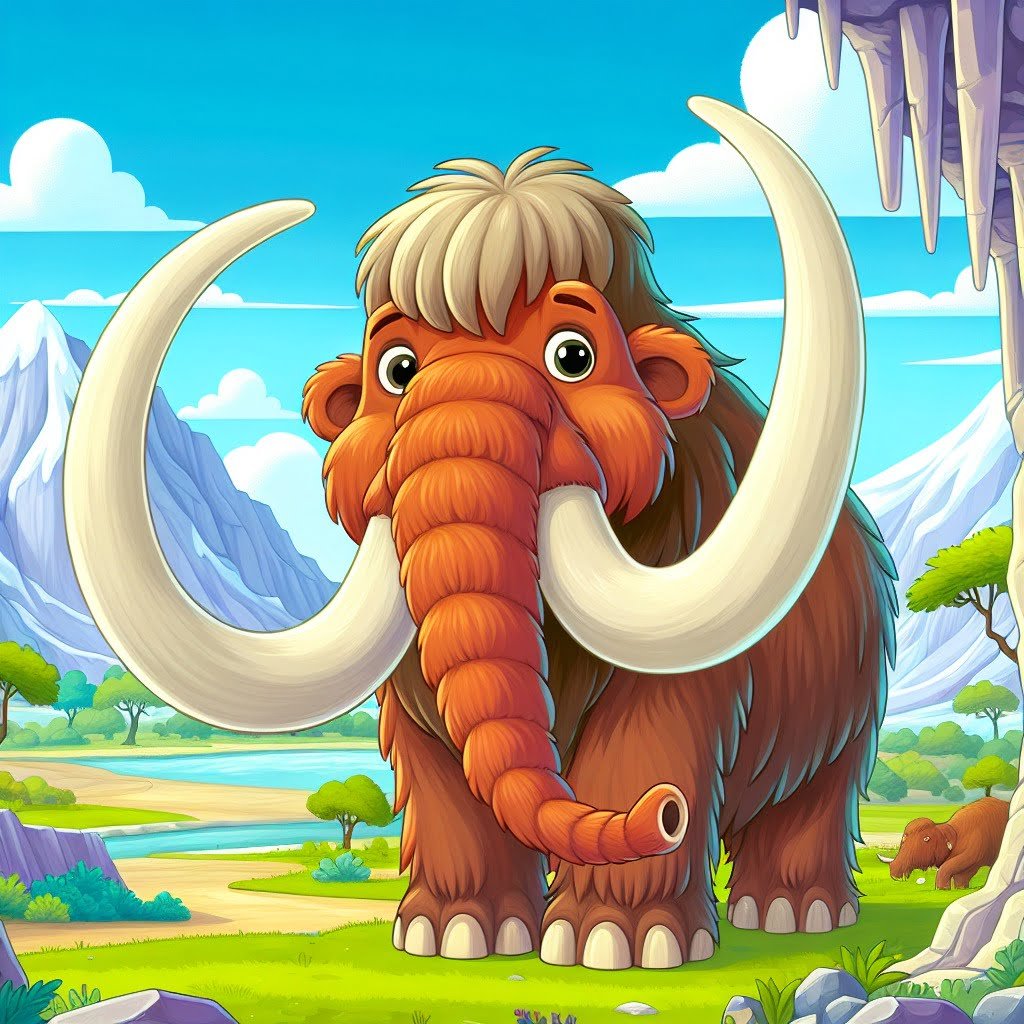
For younger kids: Woolly mammoths had really long teeth that were bigger than an elephant’s!
For older kids: Woolly mammoths, a cousin of today’s elephants, had colossal curved tusks that could reach up to 4 meters in length, which they used for protecting themselves, digging for food, and clearing snow to find vegetation.
Detailed explanation:Woolly mammoths were incredible creatures that roamed the Earth during the last Ice Age. These massive animals were closely related to modern-day elephants but had several distinct features that set them apart. One of the most striking features of woolly mammoths was their impressive tusks, which could reach lengths of up to 4 meters.
These tusks were actually elongated incisor teeth that curved upward and outwards, making them appear even more massive. They were used for a variety of tasks, including digging for food, fighting off predators, and even attracting mates. The tusks of woolly mammoths were incredibly strong and durable, allowing them to withstand the rigors of their harsh environment.
For kids who are fascinated by prehistoric life, learning about woolly mammoths and their giant tusks can be a fun and exciting experience. Imagine coming face to face with a woolly mammoth, towering over you with its massive tusks gleaming in the sunlight. It’s no wonder that these majestic creatures have captured the imaginations of people of all ages for centuries.
In addition to their impressive tusks, woolly mammoths had several other adaptations that helped them survive in their icy habitats. Their thick, shaggy fur kept them warm in cold temperatures, while their specialized teeth were perfect for grinding down tough grasses and other vegetation. These fascinating facts about prehistoric life can provide a glimpse into the world of the woolly mammoth and the incredible adaptations that allowed them to thrive in their harsh environment.
Fun Facts for Kids About Prehistoric Life
4. The Pterosaur Was the Largest Flying Creature
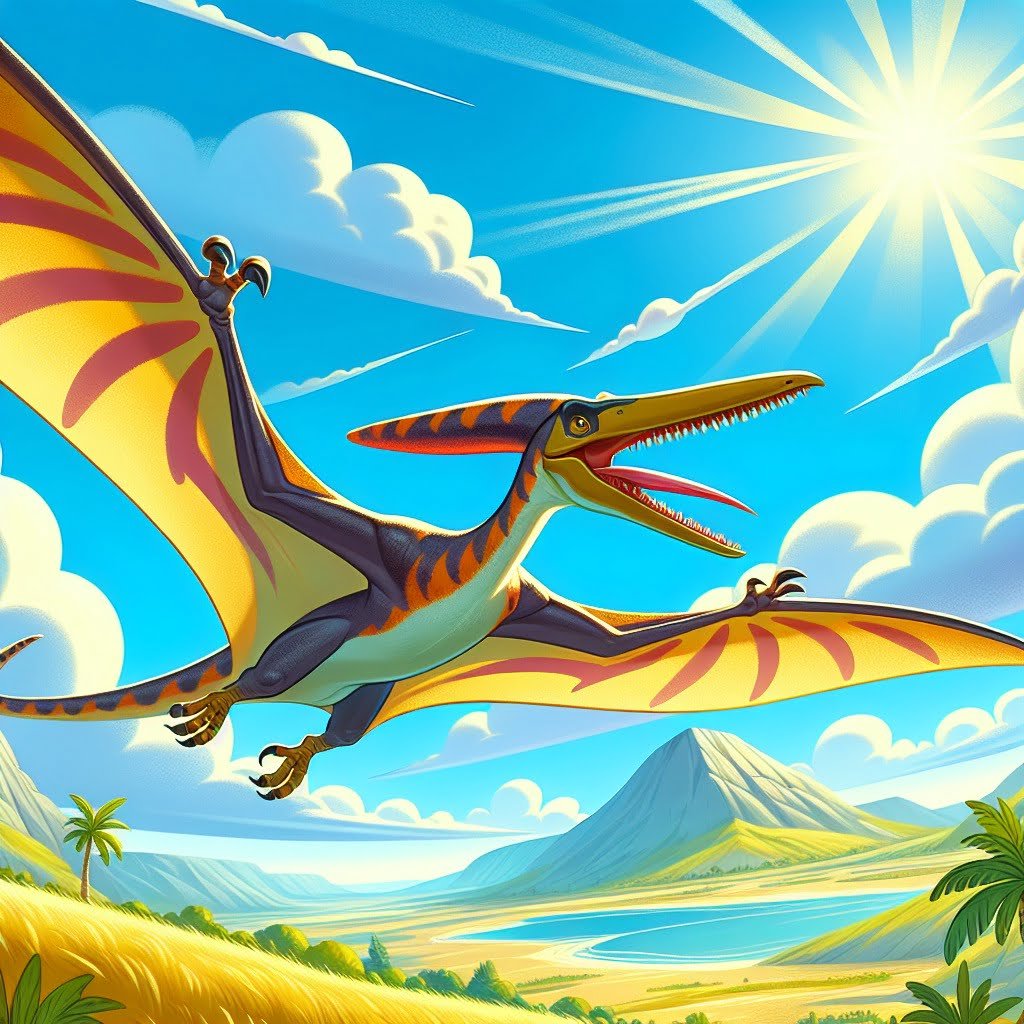
For younger kids: Pterosaurs were flying animals as big as the size of a small airplane!
For older kids: The Quetzalcoatlus, a type of pterosaur, holds the title for the largest flying animal to have ever lived, with a wingspan of up to 36 feet, making it as large as a small airplane.
Detailed explanation:Pterosaurs were a group of flying reptiles that lived during the Mesozoic Era, alongside dinosaurs. These creatures were not dinosaurs, but they shared a common ancestor with them. The Pterosaur holds the title of being the largest flying creature to have ever existed on Earth.
One of the most famous pterosaurs is the Quetzalcoatlus, which had a wingspan of up to 36 feet. To put that into perspective, that is the size of a small airplane! These creatures were well-adapted to a life in the skies, with hollow bones that made them lightweight for flying. They also had a unique wing structure, with a membrane of skin stretching from their elongated fourth finger to their body, allowing them to soar effortlessly through the air.
Pterosaurs were incredibly diverse in terms of size, shape, and behavior. Some were as small as a sparrow, while others reached sizes comparable to modern-day giraffes. They had a wide range of diets, with some species being carnivorous while others were herbivorous or even filter-feeders.
Studying pterosaurs and other prehistoric creatures can provide us with valuable insights into the history of life on Earth. These fun facts for kids about prehistoric life not only spark curiosity and wonder but also help us understand the incredible diversity of creatures that have inhabited our planet over millions of years. At the same time, it underscores the importance of preserving our planet and its biodiversity for future generations to come.
Fun Facts for Kids About Prehistoric Life
5. The Spinosaurus Was the Largest Carnivorous Dinosaur
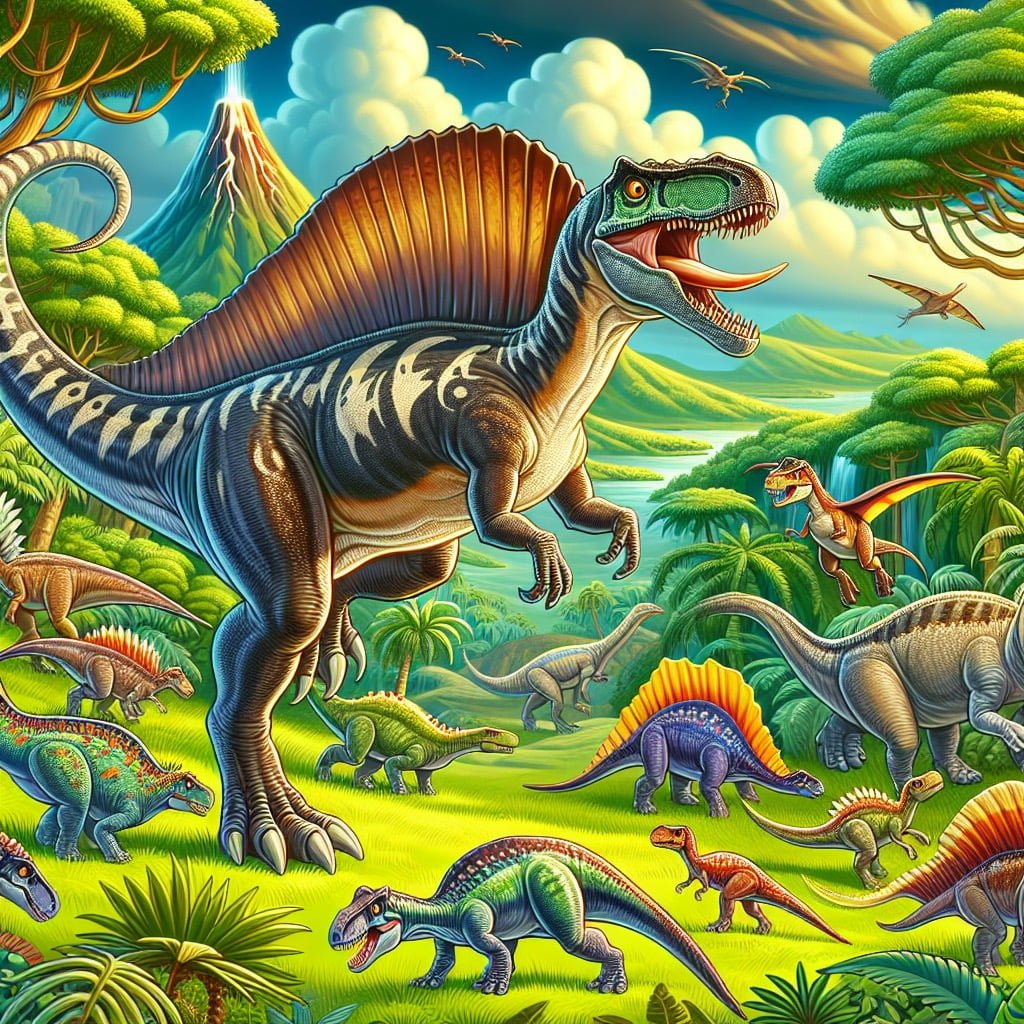
For younger kids: The Spinosaurus was a really big dinosaur that ate meat!
For older kids: The Spinosaurus, known for its massive sail-like structure on its back, was the largest carnivorous dinosaur that ever lived, reaching lengths of around 50 feet.
Detailed explanation:The Spinosaurus holds the title of being the largest carnivorous dinosaur to have ever roamed the Earth during the prehistoric era. This fascinating creature lived around 95 to 93 million years ago in what is now North Africa. Its name, which means “spine lizard,” comes from the long spines that extended from its back vertebrae, creating a sail-like structure that may have served several purposes.
One of the most interesting Fun Facts for Kids About Prehistoric Life is that the Spinosaurus was uniquely adapted to an aquatic lifestyle. It had paddle-like feet, indicating that it spent a significant amount of time in the water, perhaps even hunting for fish like a modern-day crocodile. Its long, slender jaws contained conical teeth that were perfect for catching slippery prey, further supporting the idea that it was a proficient aquatic hunter.
Despite its massive size, the Spinosaurus was not a slow-moving dinosaur. In fact, recent research suggests that it may have been a fast swimmer, capable of reaching impressive speeds in the water. Its body was streamlined, with powerful hind limbs that would have propelled it through the water with ease.
The discovery of the Spinosaurus has brought new insights into the diversity and adaptations of dinosaurs during the Mesozoic era. By studying fossils and reconstructing its anatomy, paleontologists have been able to paint a vivid picture of this fascinating creature and its prehistoric environment. The Spinosaurus is a prime example of the incredible diversity of life that existed millions of years ago, making it a captivating subject for kids interested in learning about dinosaurs and prehistoric life.
Fun Facts for Kids About Prehistoric Life
6. Saber-Toothed Cats Were Not Actually Related to Modern-Day Cats
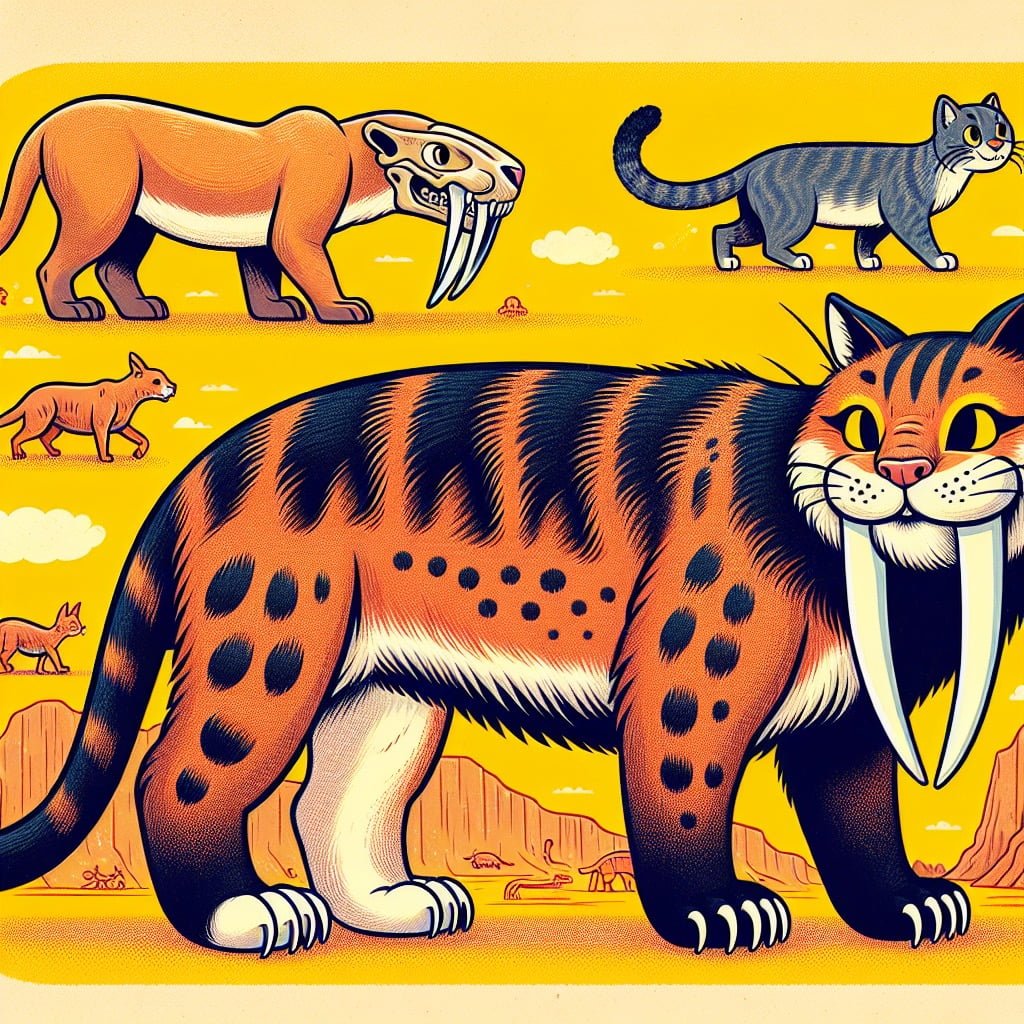
For younger kids: Saber-toothed cats had really big teeth that they used to catch their food!
For older kids: Despite their name, saber-toothed cats, such as the Smilodon, were not closely related to modern-day cats. These prehistoric predators were part of a different evolutionary line called machairodonts.
Detailed explanation:One of the most fascinating Fun Facts for Kids About Prehistoric Life is that saber-toothed cats, such as Smilodon, were not actually related to modern-day cats. Despite their similar appearance, these iconic prehistoric predators belonged to a different branch of the evolutionary tree.
Modern-day cats, such as lions, tigers, and domestic cats, belong to the Felidae family, while saber-toothed cats were part of the extinct family known as Machairodontinae. This distinction means that these two groups of felines evolved separately from each other, with saber-toothed cats developing their unique traits independently of modern cats.
Saber-toothed cats were known for their long, curved canine teeth that protruded from their mouths. These specialized teeth were used to deliver devastating bites to their prey, allowing them to take down large animals such as mammoths and bison. In contrast, modern cats have shorter, more rounded teeth that are adapted for slicing through flesh and crunching bones.
Despite their differences, both saber-toothed cats and modern cats were highly successful predators in their respective environments. While saber-toothed cats went extinct around 10,000 years ago, modern cats have continued to thrive and adapt to changing landscapes.
By understanding the evolutionary relationships between these fascinating creatures, we can gain a deeper appreciation for the diversity and complexity of prehistoric life on Earth. Fun Facts for Kids About Prehistoric Life help us to better understand the natural world and the incredible creatures that once roamed the Earth.
Fun Facts for Kids About Prehistoric Life
7. The Giant Ground Sloth Could Weigh Up to 4 Tons
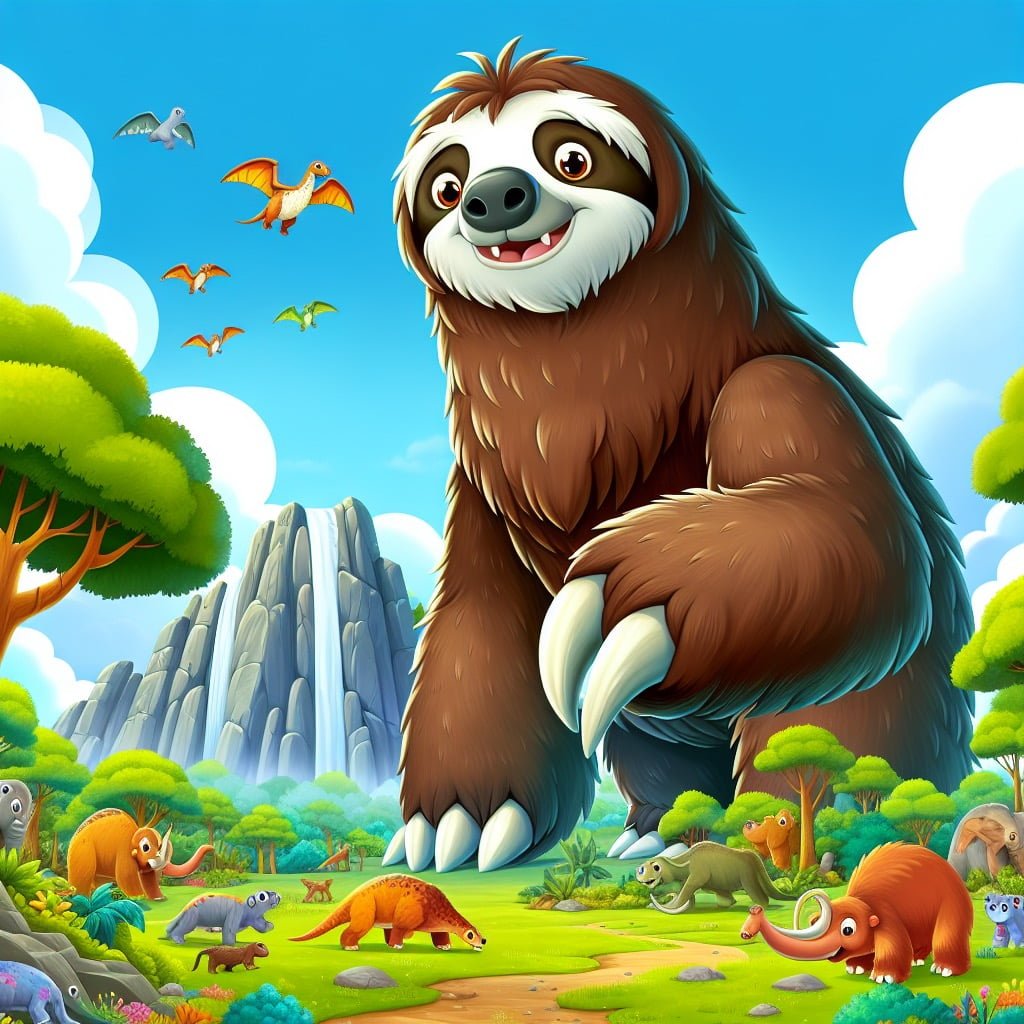
For younger kids: There was a really big sloth that was much bigger than any sloth today!
For older kids: The Megatherium, a species of giant ground sloth, could reach lengths of around 20 feet and weighed up to 4 tons, making it one of the largest land mammals to have ever existed.
Detailed explanation:Fun Facts for Kids About Prehistoric Life are always fascinating, especially when it comes to unbelievable creatures like the giant ground sloth. These massive herbivores roamed the earth during the Ice Age, and could weigh up to an incredible 4 tons. To put that into perspective, that’s the weight of about two average-sized cars!
The giant ground sloth, scientifically known as Megatherium, was one of the largest land mammals to ever exist. They had long, curved claws that they used for digging up roots and plants to eat. Despite their intimidating size, these sloths were actually quite peaceful herbivores, similar to modern-day sloths. They had a slow metabolism and a low body temperature, which allowed them to conserve energy and survive in cold climates.
These incredible creatures went extinct around 10,000 years ago, likely due to a combination of climate change and overhunting by early humans. Scientists have been able to study their remains and learn more about their size, behavior, and environment from the fossil record. Fun Facts for Kids About Prehistoric Life like the giant ground sloth serve as a reminder of the diverse and fascinating creatures that once inhabited our planet.
Fun Facts for Kids About Prehistoric Life
8. The Brachiosaurus Was Taller Than a Five-Story Building

For younger kids: The Brachiosaurus was a super tall dinosaur that could touch clouds!
For older kids: The Brachiosaurus, known for its long neck and front legs, stood at an awe-inspiring height of over 40 feet, taller than a typical five-story building.
Detailed explanation:The Brachiosaurus, a dinosaur that lived during the Late Jurassic period, was truly a giant among giants. This massive creature stood taller than a five-story building, reaching heights of up to 40 feet. Its long neck and small head made it a distinctive member of the sauropod family, which also included dinosaurs like the Diplodocus and the Apatosaurus.
One of the most interesting **Fun Facts for Kids About Prehistoric Life** is that the Brachiosaurus was not only tall but also incredibly heavy. Estimates suggest that an adult Brachiosaurus could weigh anywhere from 30 to 80 tons, making it one of the heaviest land animals to ever walk the earth. Its massive size and weight were supported by four sturdy legs, each ending in a large, round foot with clawed toes.
Despite its enormous size, the Brachiosaurus was actually a herbivore, feeding on plants and leaves high up in the trees. Its long neck allowed it to reach vegetation that other dinosaurs could not access, giving it a unique advantage in finding food. The Brachiosaurus’s teeth were adapted for stripping leaves off branches, rather than cutting through tough vegetation.
The discovery of the Brachiosaurus and other giant dinosaurs has fascinated scientists and the general public for centuries. These creatures provide us with a glimpse into a world that existed millions of years ago, showcasing the incredible diversity and size of prehistoric life. **Fun Facts for Kids About Prehistoric Life** like the towering Brachiosaurus help us appreciate the wonders of the ancient world and the mysteries that still remain to be uncovered.
Fun Facts for Kids About Prehistoric Life
9. Prehistoric Sharks Existed 200 Million Years Before Dinosaurs
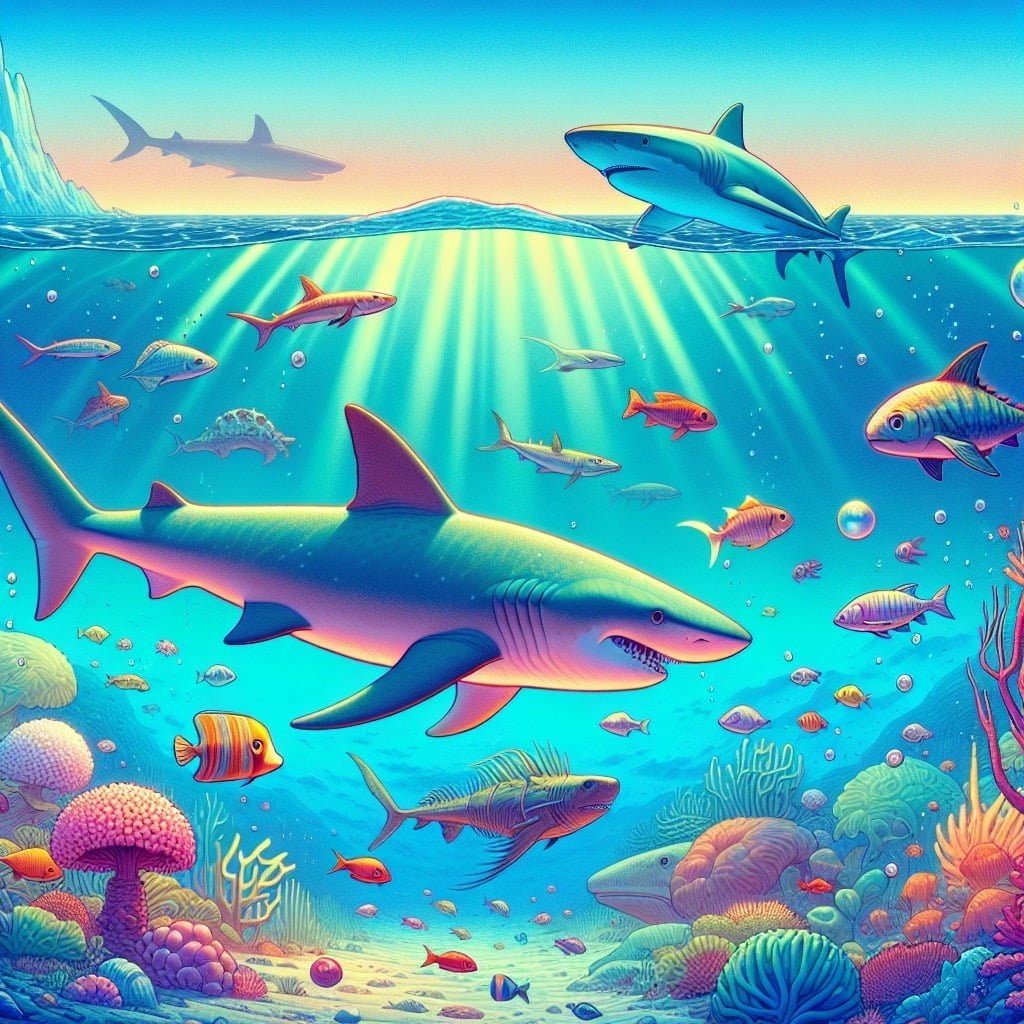
For younger kids: There were really old sharks that swam in the ocean with the dinosaurs!
For older kids: Sharks as a species have been around for an astonishing 400 million years, with some prehistoric shark species living 200 million years before the first dinosaurs appeared.
Detailed explanation:Prehistoric sharks are an incredibly fascinating topic when it comes to learning about ancient life on Earth. Contrary to popular belief, these creatures actually roamed the oceans 200 million years before the first dinosaurs even appeared. This fact alone showcases the incredible longevity and adaptability of sharks as a species.
When discussing fun facts for kids about prehistoric life, it is important to highlight the unique characteristics and adaptations of these early sharks. For example, many prehistoric sharks had larger sizes compared to modern-day species, with some reaching lengths of up to 60 feet. Additionally, these ancient sharks had distinct features such as elongated bodies, sharp teeth, and powerful jaws that allowed them to dominate their underwater habitats.
One of the most well-known prehistoric sharks is the megalodon, a massive species that lived during the Cenozoic era. The megalodon is estimated to have grown up to 60 feet in length and had a bite force stronger than any other known animal. Its sheer size and power make it a popular subject for children interested in learning about prehistoric life.
Overall, exploring the world of prehistoric sharks offers a fascinating glimpse into the diversity and evolution of marine life throughout history. By showcasing fun facts about these ancient creatures, kids can develop a deeper appreciation for the wonders of the natural world and the mysteries that lie beneath the surface of the ocean.
Fun Facts for Kids About Prehistoric Life
10. Velociraptors Were Intelligent Hunters, Not Big Scary Monsters
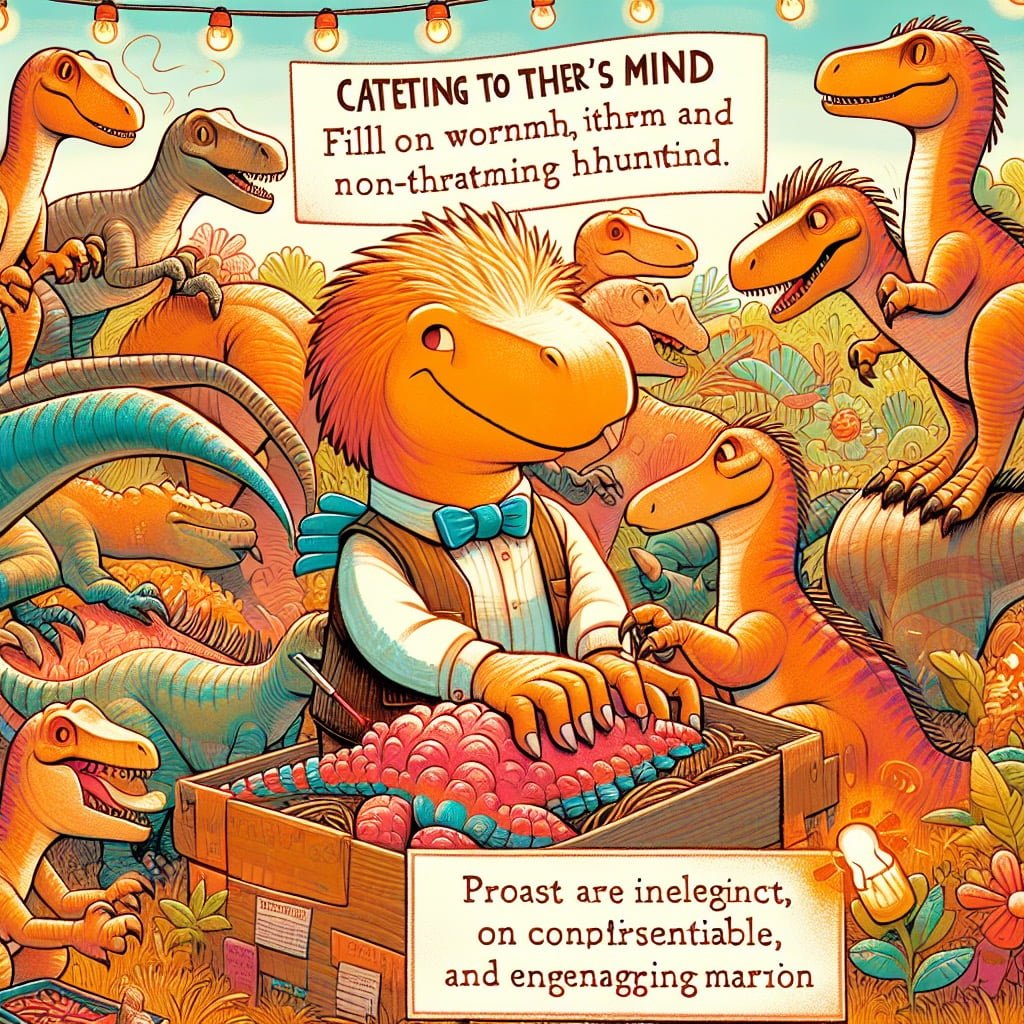
For younger kids: Velociraptors were fast and clever dinosaurs that could catch their prey!
For older kids: Contrary to their portrayal in movies, velociraptors were actually intelligent pack hunters, known for their speed, agility, and sharp claws, rather than being large, solitary monsters.
Detailed explanation:When it comes to prehistoric creatures, Velociraptors are often depicted as big, scary monsters in popular culture. However, the truth is that Velociraptors were actually intelligent hunters. These dinosaurs were part of the Dromaeosauridae family, known for their sharp claws and keen sense of intelligence.
Velociraptors were relatively small compared to other dinosaurs, standing at around 3 feet tall and 6 feet long. Despite their size, they were agile predators that worked together in packs to take down larger prey. Their sharp, curved claws were used to slash and disembowel their victims, while their serrated teeth were perfect for tearing flesh.
One of the most fascinating aspects of Velociraptors is their level of intelligence. They had large brains in proportion to their body size, indicating that they were highly capable hunters. They were able to problem solve, communicate with each other, and even plan out coordinated attacks on their prey. This level of intelligence sets Velociraptors apart from many other dinosaurs of their time.
In addition to their hunting abilities, Velociraptors also had feathers covering their bodies. These feathers would have provided insulation and helped with display and communication within the pack. This indicates that Velociraptors were not only fearsome predators, but also social creatures that relied on each other for survival.
In conclusion, Velociraptors may not have been the giant, menacing monsters portrayed in movies, but they were certainly formidable hunters with advanced intelligence. These fun facts about prehistoric life help us better understand the true nature of these fascinating creatures.
Did You Know?
Prehistoric animals lived in a time long before humans existed, and their fossils provide scientists with important information about the Earth’s ancient past and the incredible diversity of life that roamed our planet.
Here is a summary of fun facts for kids about prehistoric life:
Discovering fun facts about prehistoric life is not just an entertaining pastime, but a valuable educational experience for both children and adults. By exploring the world of dinosaurs, ancient mammals, and other prehistoric creatures, we can ignite a passion for learning about Earth’s rich history and gain a deeper understanding of the incredible diversity of species that once roamed the planet.
Learning about prehistoric life allows us to appreciate the complexity and beauty of the natural world, as well as gain valuable insights into the evolution of life on Earth and the interconnectedness of all living organisms. By immersing ourselves in the stories of creatures like the Tyrannosaurus Rex and the Dimetrodon, we can spark curiosity, inspire wonder, and encourage a sense of exploration about the world around us.
So, whether you’re a curious kid or an inquisitive adult, delving into fun facts about prehistoric life is a rewarding journey that can broaden your understanding of Earth’s ancient history and inspire a lifelong love for learning. Embrace the thrill of discovery and embark on an exciting adventure through time and evolution by diving into more fascinating facts about prehistoric life.
Sources and additional information for Fun Facts for Kids About Prehistoric Life
WikipediaBritannicaSmithsonian National Museum of Natural History – DinosaursAmerican Museum of Natural History – DinosaursThe Dinosaur DatabaseThe Paleobiology DatabaseDinosaur National Monument (U.S. National Park Service)Jurassic Park InstituteBerkeley University of California – Understanding EvolutionDinosaurs – The Australian MuseumBBC Earth – DinosaursSmithsonian InstitutionNatural History MuseumAmerican Museum of Natural HistoryDinoLand UCMPThe Dinosaur MuseumBBC NatureDiscovery ChannelNational Science FoundationPaleontological Society
